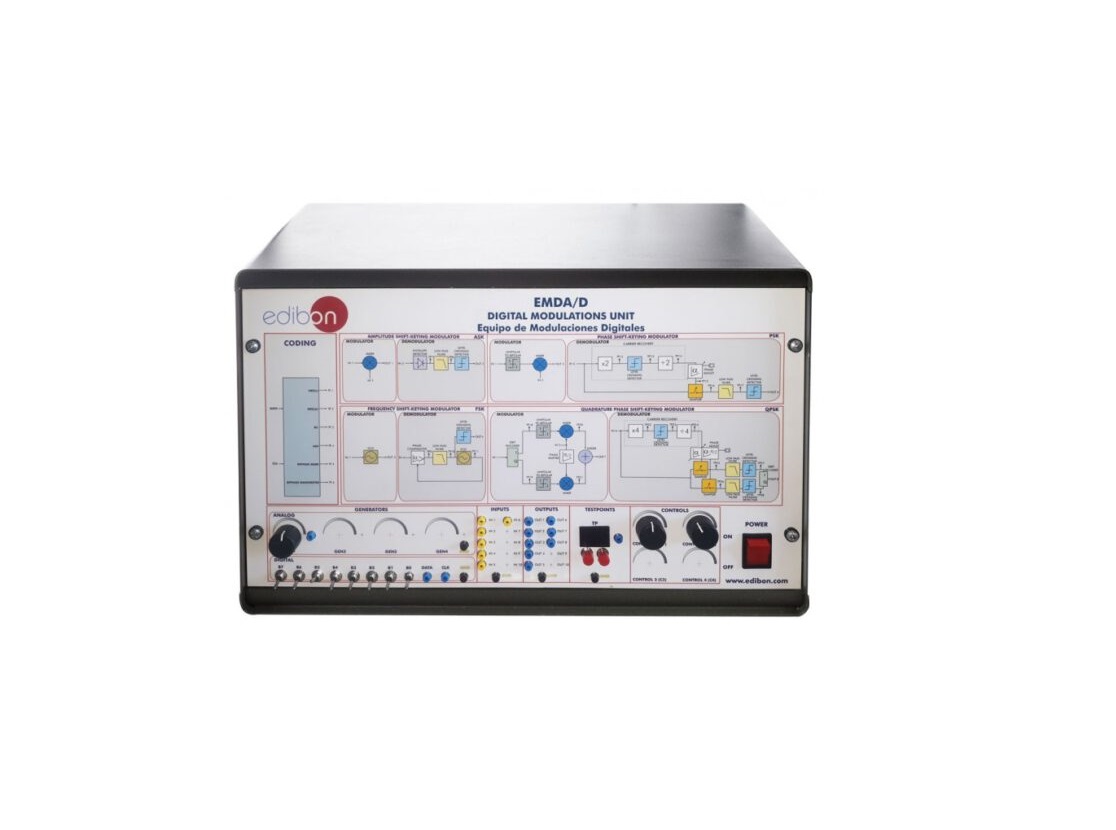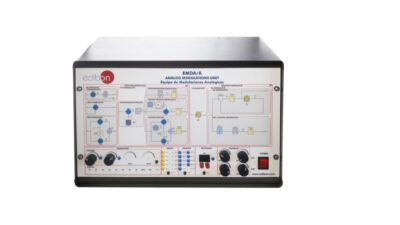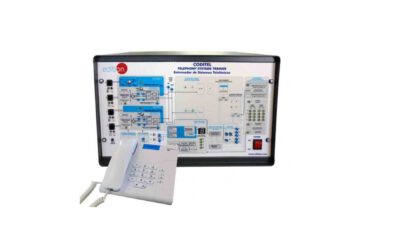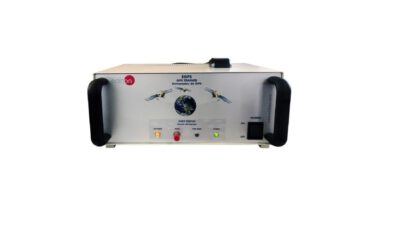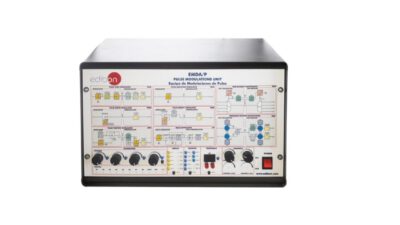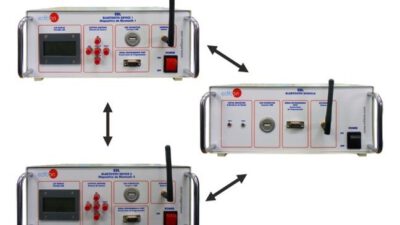The Digital Modulations Unit, “EMDA/D”, is a complete digital communications Unit designed to explain the basic concepts of digital modulation. It covers the principles of many of the modulation and demodulation techniques used in modern digital communication systems.
The unit provides a basic understanding of the concepts behind digital communications techniques: Amplitude Shift Keying (ASK), Frequency Shift Keying (FSK) , Phase Shift Keying (PSK) and Quadrature Phase Shift Keying (QPSK). It allows students to study some of the line coding techniques like NRZ(L), NRZ(M), RZ, RB, etc.
SPECIFICATION
All elements are mounted in a metallic box, with power supply and block diagram
Functional blocks:
- Line Coding
Non Return to Zero Level line coding circuit (NRZL).
Non Return to Zero Mark line coding circuit (NRZM).
- Modulators and demodulators:
- Amplitude-Shift Keying (ASK)
- Mixer.
- Filter
- Frequency-Shift Keying (FSK)
- Phase-Locked Loop detector (PLL).
- Phase-Shift Keying (PSK)
- Unipolar to Bipolar converter
- Mixers
- Carrier recovery circuit
- Sampler
- Filter.
- Level-Crossing detector.
- Quadrature Phase-Shift Keying (QPSK)
- Dbit encoder circuit.
- Unipolar to Bipolar converters.
- Mixers.
- Carrier recovery circuit
- Samplers circuits.
- Filter.
- Level-Crossing detectors.
- Dbit decoder circuit.
- Amplitude-Shift Keying (ASK)
- Analog Generators:
Carrier signal.
- Digital Generators:
A byte (8 bits, serial)
- Six analog Inputs.
- Eigth analog Outputs.
- 28 test points.
- Two control
Cables and Accessories, for normal operation.
Manuals: This unit is supplied with the following manuals: Required Services, Assembly and Installation, Starting-up, Safety, Maintenance & Practices Manuals

